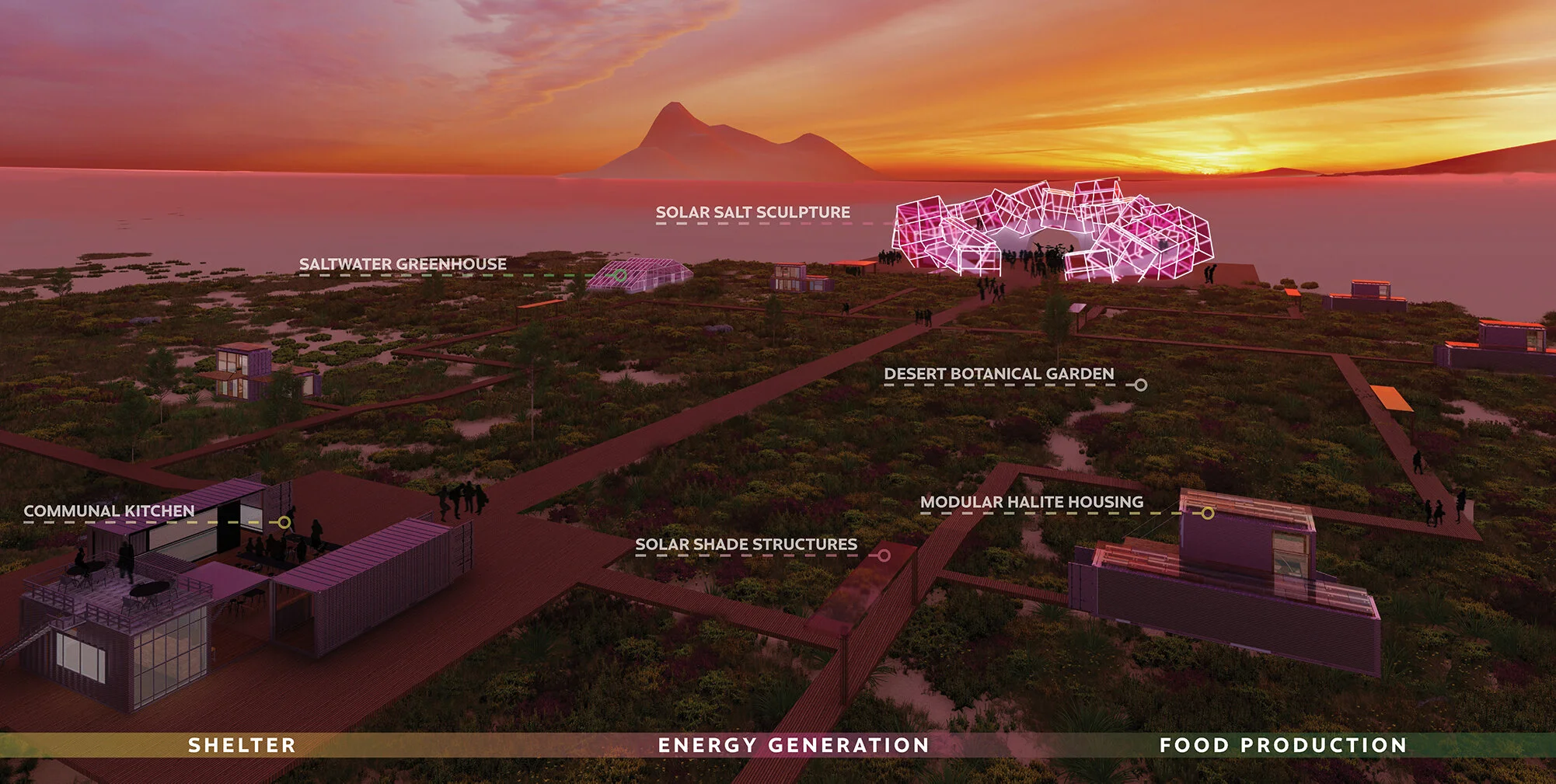
SALT CIRCUIT:
A Community-Based Halite System Concept for Burning Man’s Fly Ranch
LAGI’s 2020 Design Competition for Burning Man’s Fly Ranch
Teams were tasked with designing an innovative installation to be sited on The Burning Man Project’s 3,800 acre property - Fly Ranch - north of their annual Burning Man event site.
Designs were to address systems of power, water, shelter, food, and/or regeneration in the desert landscape.
Topic: Sculptural and landscape system design
Date: January-May 2020
Location: Fly Ranch, Gerlach, Nevada
Software: ArcGIS, SketchUp, Rhino, Lumion, Adobe Photoshop, Adobe Illustrator, Adobe InDesign
Platforms: Google Meet, Google Drive
Additional Student Members: Ethan Appelgren, Jesse Newman, Maximilian Eckhardt, Yudou Hou, James Tynan, and John Enoch
Under vast cerulean skies lay the remnants of the once great Lake Lahontan.
Cut off from its headwaters and severed from local aquifers, Lahontan boiled away until all that remained was its mineral precipitate, a saline fossil scarring the landscape - a playa, spanning what was once the lake bed. Halite epitomizes regenerative growth, building off of itself, and serves as the ideal model for flexible and modular design. Salt Circuit is a system which generates energy and radiates it into the attached structures on site, combining sustainable and modular design with community values and programming.
Desert Botanical Garden
Sections of the site will be dedicated to fostering a desert botanical garden. With flora chosen specifically to meet the environmental conditions of the unique landscape, the garden will increase site biodiversity with plants selected for their temperature thresholds, moisture needs, and halophilic characteristics.
The Playa’s Salt Pavilion
Inspired by the flexible nature of the organisms that thrive in the unique conditions within the playa, the Salt Pavilion’s design is directly influenced by the formation of salt crystal accumulation.
The pavilion accommodates large scale programming and generates energy through the inclusion of solar panels, which serve as the structure for the halite “crystals” atop the salt base.
The base of the structure can be built from assembled panels using salt sourced directly from the playa via a process of collection, processing, and construction by volunteers and community members.
Saltwater Greenhouse
Greenhouses draw their power from solar panels and use a saline solution for evaporative cooling to reduce irrigation requirements.
Halite Housing Community
Housing structures within the Halite Community derive their form from the original halite structure and are connected by a series of boardwalks that convert solar energy into communal power.
Salt Circuit proposes modular housing, based on expandable and customizable container structures which open out into the environment.
Sections of the structures can open out into the environment, creating outdoor spaces and increased airflow and cooling throughout the day. At night, they seal shut to conserve energy and reduce heating requirements.
Community kitchens complement the housing structures and provide a space for visitors to cook, commune, and share together.






